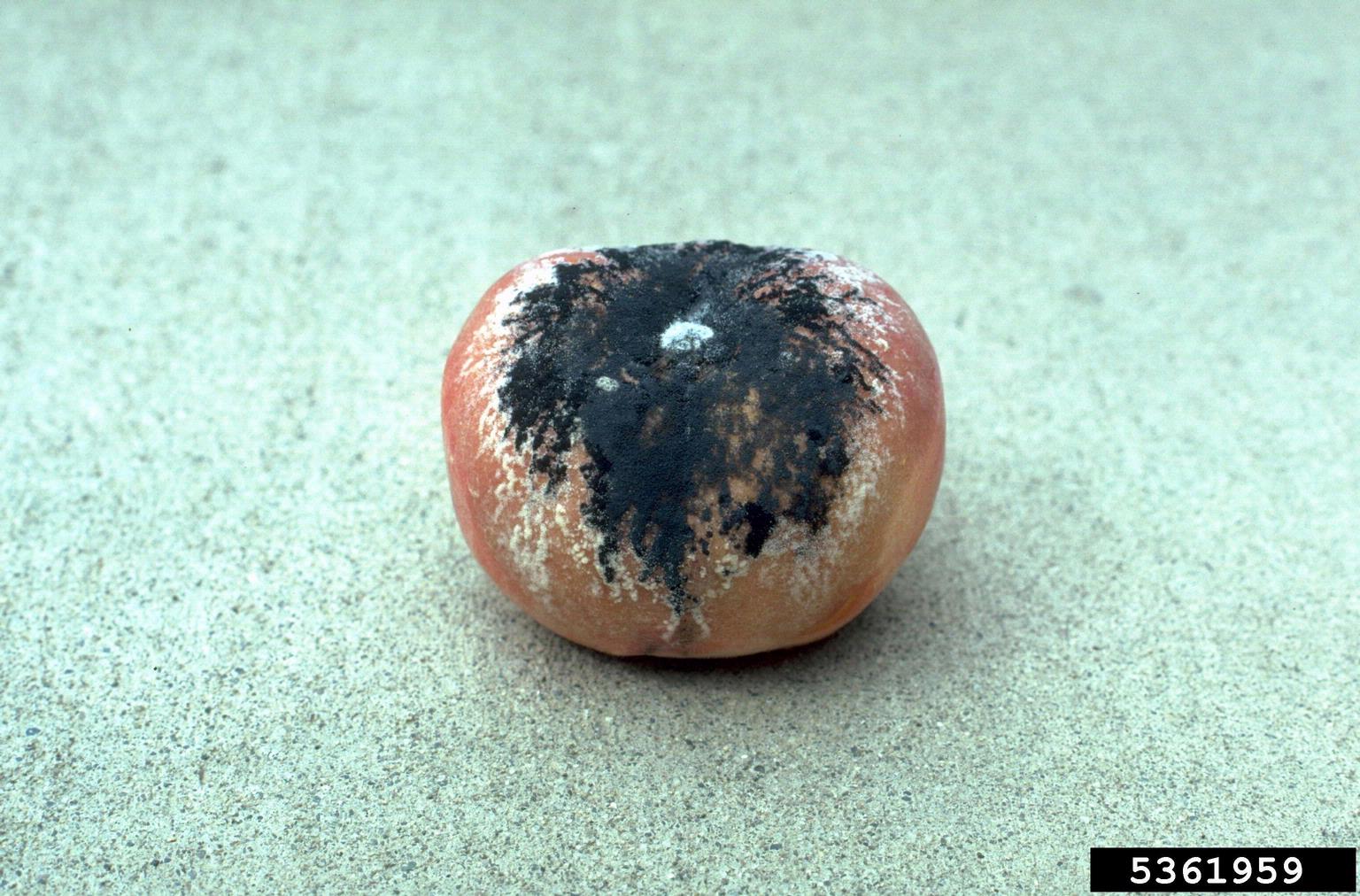Peach Rhizopus Rot Control: How To Treat Rhizopus Rot Of Peaches


There’s nothing better than homegrown peaches. There’s just something about picking them yourself that makes them extra sweet. They can be especially prone to disease though, and it’s important to be vigilant. Even after you’ve harvested your peaches, it’s possible for disaster to strike. One common post-harvest disease is rhizopus rot. Keep reading to learn more about peach rhizopus rot symptoms and treating a peach with rhizopus rot disease.
Peach Rhizopus Rot Info
Rhizopus rot is a fungal disease that affects stone fruits, usually after they’ve been harvested. It can also appear on overripe fruit that’s still on the tree. Peach rhizopus rot symptoms usually start as small, brown lesions in the flesh, which can rapidly develop into a flossy white fungus on the skin, as quickly as overnight.
As the spores grow, the floss turns gray and black. The skin of the fruit will slip off easily when handled. Needless to say, once these symptoms appear, the infected fruit is pretty much a lost cause.
What Causes Peach Rhizopus Rot?
Rhizopus rot of peaches develops only in warm conditions, and only on very ripe fruits. The fungus will often grow on rotten fruit under the tree, spreading upward to the healthy fruit above. Peaches that have been damaged by insects, hail, or overhandling are especially susceptible, as the fungus can more easily break through the skin.
Once one peach has been infected, the fungus can travel rapidly to other peaches that are touching it.
Peach Rhizopus Rot Control
To help prevent the spread of rhizopus rot to healthy peaches, it’s a good idea to keep the orchard floor clear of fallen fruit. There are sprays designated for rhizopus rot, and it’s best to apply them toward the end of the season, near harvest time.
During harvest, make sure to handle your peaches with care, as any breaks in the skin will help the fungus spread. The most effective way to fight the fungus post-harvest is to store your peaches at 39 degrees F. (4 C.) or below, as the fungus can’t develop under 40 degrees F. (4.5 C.). Even fruits harboring the spores will be safe to eat at this temperature.
Gardening tips, videos, info and more delivered right to your inbox!
Sign up for the Gardening Know How newsletter today and receive a free copy of our e-book "How to Grow Delicious Tomatoes".

The only child of a horticulturist and an English teacher, Liz Baessler was destined to become a gardening editor. She has been with Gardening Know how since 2015, and a Senior Editor since 2020. She holds a BA in English from Brandeis University and an MA in English from the University of Geneva, Switzerland. After years of gardening in containers and community garden plots, she finally has a backyard of her own, which she is systematically filling with vegetables and flowers.
-
 Terrifically Tubular Flowers For Hummingbirds: 9 Tube-Flowered Plants To Attract Hummers
Terrifically Tubular Flowers For Hummingbirds: 9 Tube-Flowered Plants To Attract HummersGrowing tubular flowers for hummingbirds helps you create the optimum feeding conditions for your winged friends. Here are nine tubed delights for hummers
By Tonya Barnett
-
 How To Grow Hydroponic Tomatoes For Fresh Indoor Harvests – No Soil Required
How To Grow Hydroponic Tomatoes For Fresh Indoor Harvests – No Soil RequiredLearning how to grow tomatoes in water is easy and allows you to harvest fresh-home-grown produce in every season without any mess.
By Ellen Wells